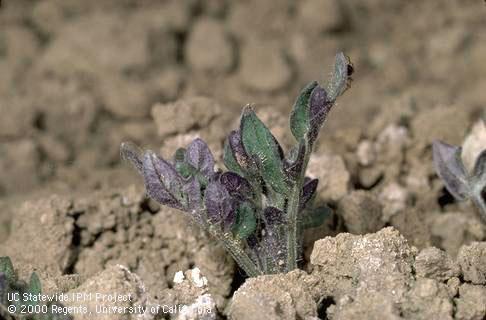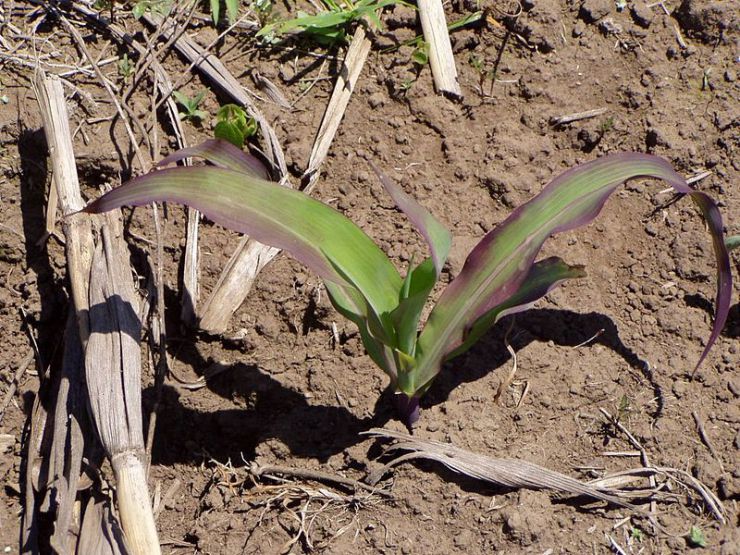Background:
Low available phosphorus is responsible for reduced agriculture productivity in many regions globally, hindering soil health, especially in tropical regions with highly weathered soils. As soils age, soil minerals are transformed into iron and aluminum oxides. These minerals, often bright red and yellow, give these soils their vivid colors but also tightly bind P.1 They differ from the phyllosilicate minerals more commonly found in younger soils in that they do not maintain a permanent negative charge due to isomorphic substitution. Rather, many iron and aluminum oxides maintain a positive charge at acid to neutral pH and bind tightly to the negatively charged P oxyanion, reducing availability of P for plants.2-3 Further, during the aging process, soil acidity increases and plant nutrients such as P may be lost through leaching. Methods to increase soil P availability include: 1) liming (increasing soil pH), 2) increasing soil organic matter (blocking P sorption sites and increasing organic P pool), 3) and by P fertilization (increasing size of total P pool).

Tomato Suffering from P deficiency
http://ipm.ucanr.edu/PMG/M/A-TO-MDEF-SD.003.html
Diagnosis:
Low available phosphorus is best diagnosed by soil and plant tissue testing. Visual inspection of plants may also be used to identify P deficiencies; a common symptom is purpling or reddening of leaves.

Corn suffering from P deficiency
https://commons.wikimedia.org/wiki/File:2005_1214_0928_Hlokozi_-_Acid-induced_P_deficiency.jpg
By Alandmanson [CC0], from Wikimedia Commons
Management:
Below is a short summary of various management practices. For a full list of additional resources click here.
Increasing Soil pH
Liming may increase plant available P by altering mineral surface charge, reducing the affinity of mineral surfaces for P binding.2-3 Liming application rates vary depending on soil acidity, but soils with pH <5 need in excess of 5 tons of lime per ha to bring the soil to the optimum pH.4-5
- Choosing the right liming materials helps to ensure adequate pH adjustment.
- Soil testing necessary to know how much lime should be applied.
See section on acidity for additional resources
Increasing soil organic matter
Soil organic matter can improve plant available phosphorus by decreasing the P binding capacity of the soil and providing organic sources of P.
- Management strategies to such as cover cropping and compost may help increase organic matter.
- Legumes may be helpful in areas with poor access to organic fertilizers
- Biological P cycling helps keep P mobile and plant available.
See section on low organic matter for additional resources.
Applying phosphate fertilizers:
Use of phosphate fertilizers will increase total soil P and at least in the near term, increase available P.
- Phosphate fertilization can be achieved with both inorganic and organic fertilizers.
- Rock Phosphate is an important P fertilizer in many parts of the world.
- It is also important to consider other plant nutrient needs when fertilizing.
Additional Resources:
Lime Application:
- A extension publication from Virginia Tech on sources of lime for acid soils. https://pubs.ext.vt.edu/content/dam/pubs_ext_vt_edu/452/452-510/452-510_pdf.pdf
- A book chapter developed by William Natale, Danilo Eduardo Rozane, Serge-EÌtienne Parent and LeÌon Etienne Parent on soil acidity and liming in tropical fruit orchards. http://cdn.intechopen.com/pdfs/41133/InTech-Soil_acidity_and_liming_in_tropical_fruit_orchards.pdf
- Information on liming developed by the Virginia Department of Conservation and Recreation. http://www.dcr.virginia.gov/document/standardsandcriteria.pdf
Increasing Soil Organic Carbon:
- Resource on managing soil organic matter developed by the Grains Development and Research Corporation of the Australian Government. https://grdc.com.au/__data/assets/pdf_file/0029/107696/grdc-guide-managingsoilorganicmatter-pdf.pdf.pdf.
- Potentials of forage legumes in farming systems of sub-Saharan Africa - Proceedings of a workshop held at ILCA, Addis Ababa, Ethiopia http://www.fao.org/wairdocs/ilri/X5488e/x5488e00.htm#Contents
Phosphorus Fertilization Strategies:
- Improving Phosphorus Fertility in Tropical Soils through Biological Interventions http://ciat-library.ciat.cgiar.org/Articulos_Ciat/DK3724_C037.pdf
- A bulletin developed by the UNFAO on soils and phosphorus fertilizer use. http://www.fao.org/docrep/010/a1595e/a1595e00.htm.
- A bulletin developed by the UNFAO on fertilizers and plant nutrition http://www.fao.org/3/a-aq355e.pdf.
- Use of Phosphate Rocks for Sustainable Agriculture http://www.fao.org/docrep/007/y5053e/y5053e00.htm#Contents
- General information on the sustainable management of soil resources in the humid tropics http://archive.unu.edu/unupress/unupbooks/uu27s
Further Information
- Methods for testing soil phosphorus developed by USDA-NRCS https://www.nrcs.usda.gov/Internet/FSE_DOCUMENTS/nrcs142p2_051878.pdf
References:
- Rasmussen, C.; Matsuyama, N.; Dahlgren, R. A.; Southard, R. J.; Brauer, N., Soil genesis and mineral transformation across an environmental gradient on andesitic lahar. Soil Science Society of America Journal 2007, 71 (1), 225-237.
- Kosmulski, M., Surface charging and points of zero charge. CRC press: 2009.
- Parks, G. A., The isoelectric points of solid oxides, solid hydroxides, and aqueous hydroxo complex systems. Chem. Rev. 1965, 65 (2), 177-198.
- DCR, V., Virginia Nutrient Management Standards and Criteria. Richmond, VA. 2015.
- Margenot, A. J.; Singh, B. R.; Rao, I. M.; Sommer, R., Phosphorus fertilization and management in soils of Sub-Saharan Africa. Soil Phosphorus, CRC Press, Boca Raton 2016, 151-208.
